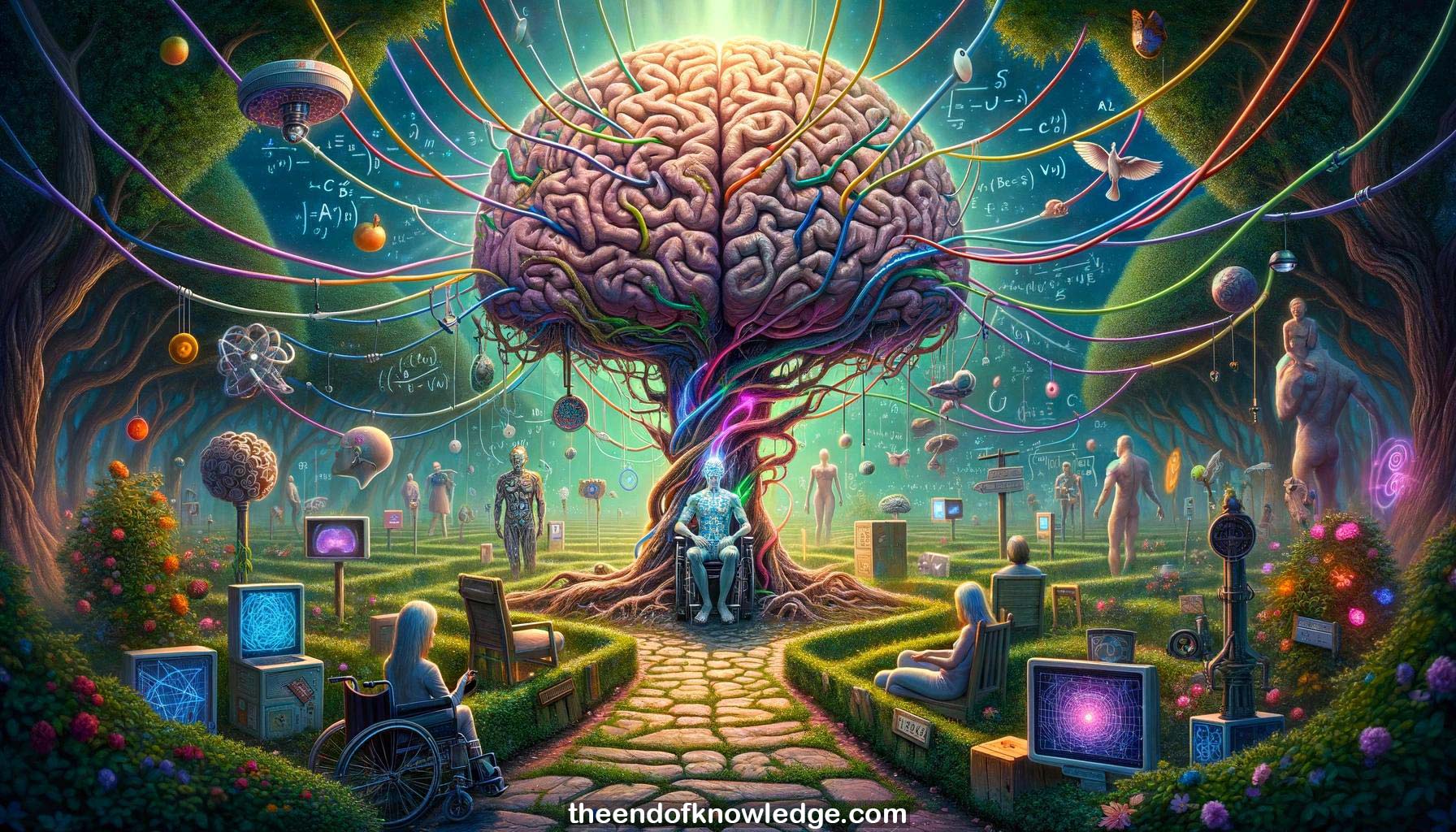 >
>
Concept Graph & Resume using Claude 3 Opus | Chat GPT4 | Llama 3:
Resume:
1.-Maryam Alimardani is a researcher in brain-computer interfaces (BCIs) at the University of Amsterdam.
2.-BCIs connect human brains to external machines using neuroimaging, AI, machine control, and feedback components.
3.-Alimardani's research focuses on neuro-adaptive interfaces for VR/social robots and user interaction experiences.
4.-Active BCIs require active user effort, reactive BCIs depend on brain reactions to stimuli, and passive BCIs monitor user states.
5.-Motor imagery, imagining movement without execution, is a common but demanding task for active BCIs.
6.-15-30% of novice users struggle with motor imagery BCIs, which was previously called "BCI illiteracy" but is now "BCI inefficiency".
7.-The BCI inefficiency problem has persisted for 14 years without a clear solution.
8.-It's unclear if the user, the AI system, or both are responsible for BCI inefficiency.
9.-Alimardani's research looks at human factors like cognitive skills, personality, demographics, and mental states related to BCI performance.
10.-High visual-spatial memory, low autonomy traits, and vivid visual imagery correlated with better motor imagery BCI performance.
11.-A study with 248 participants found no significant gender differences in overall motor imagery mu suppression.
12.-Deep learning models that adapt to each user's patterns improved BCI accuracy, especially for low performers.
13.-Providing human-like robot visual feedback activated sensorimotor areas more than standard abstract computer feedback.
14.-Users learned motor imagery BCI skills better over multiple sessions with embodied human-like feedback versus non-embodied screen feedback.
15.-Gamification and immersive environments using VR/virtual agents show potential for engaging motor imagery BCI training.
16.-A review found studies mostly manipulated feedback in gamified BCIs, but other game elements need more empirical testing.
17.-Combining adaptive AI with engaging gamified protocols could improve both user learning and system performance together.
18.-Social interaction and multi-user gaming are promising areas to make BCI training more motivating.
19.-BCI gaming can go beyond entertainment to enable neurorehabilitation applications.
20.-Embodied feedback of virtual hands can help motivate stroke patients in BCI rehabilitation training.
21.-Gamification could further enhance BCI-based stroke therapy and other clinical applications.
22.-BCI researchers face challenges in obtaining ethical clearance related to data collection, storage, and user privacy.
23.-Ethical concerns for BCIs include physical safety, psychological factors, social impact, user experience, autonomy, and accountability.
24.-More research is needed on the ethics of BCI systems as they move outside the lab.
25.-Mu rhythm suppression for detecting motor imagery can be extracted within 2-4 seconds of the mental task.
26.-Gamification may help users adapt and stay engaged with BCIs compared to monotonous standard protocols.
27.-Light perception differences between genders were not examined as a factor in Alimardani's BCI performance study.
28.-For stroke rehabilitation, combining motor imagery BCIs with tactile muscle stimulation feedback may help restore brain-muscle connections.
29.-Classifying specific emotions from EEG signals remains very challenging due to individual differences and the complexity of neural emotion representations.
30.-Modern EEG caps that follow standard positioning systems have reduced concerns about inconsistent electrode placements between sessions.
Knowledge Vault built byDavid Vivancos 2024